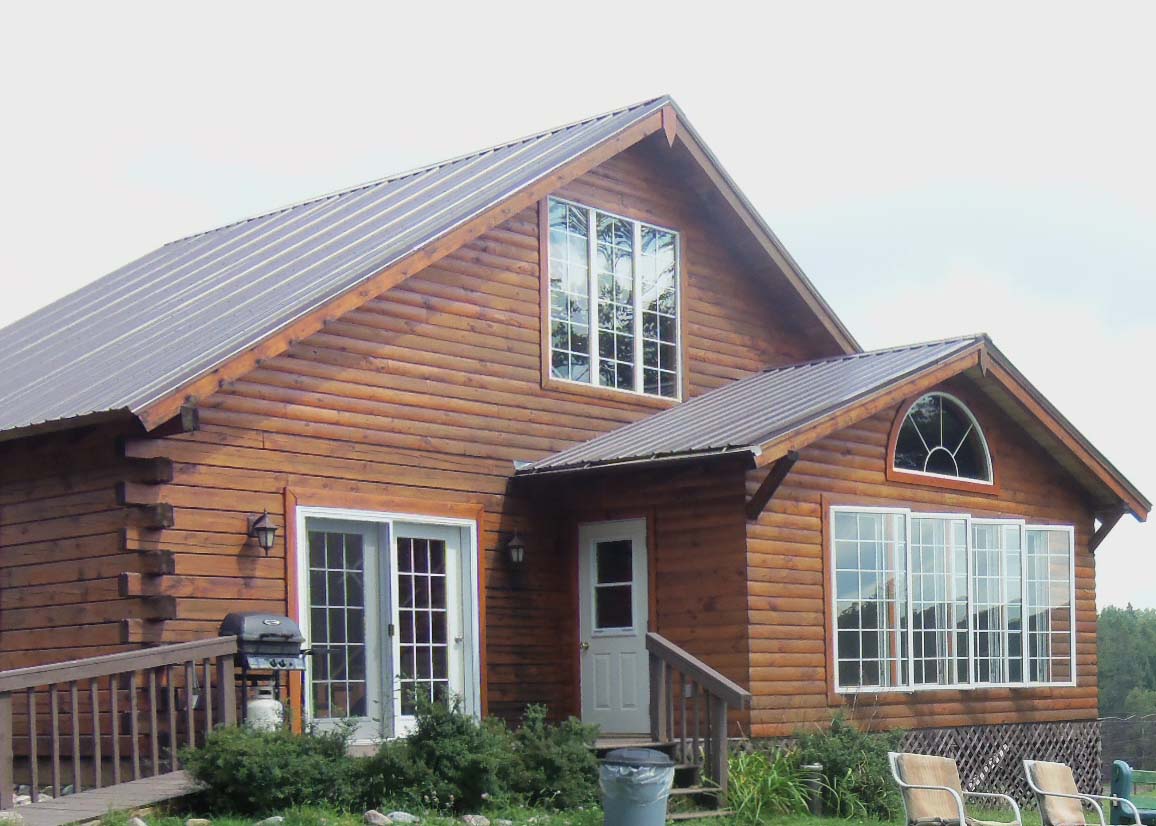Dave Gervais, Chair STAO Safety Committee, construction worker
The options for your students that drop out of high school or graduate with high school are very limited. After rolling through the low paying jobs of the service sector, restaurant or retail business, construction work looks pretty good. How do the science and mathematical principles and calculations in construction compare to that taught in our science classes?
 Cabin built by an illiterate, innumerate foreman and a retired (2010) science teacher
Cabin built by an illiterate, innumerate foreman and a retired (2010) science teacher
Measurement:
Despite the adoption of the metric system, all measurements in the construction industry are made in the old imperial system. Lengths are cut in inches, portable air compressors that run the nail guns are set in psi, area and volume calculations are done in square feet and cubic yards. Houses are framed to fit 4 ft × 8 ft dimensions. Contrast this with our commitment to the metric system in our science classes.
The numbers used:
Measurements in the construction involve fractions. Workers are expected to measure using multiples of an ⅛
th. They also need to simplify the fractions to ¼’s and ½’s. They need to be able to know that ⁴/₈
ths becomes ½. Depending on the material and the project, some require precision to
1/
16th. Contrast that with measurements and calculations in our science classes that involve decimals only.
Important index:
Slope is a powerful index used in science and used to analyze rates of change. Slopes are never used as a single number in construction. Instead the formula part of a slope calculation (rise/run) conveys more information. The slope on the cabin (see picture above) was a
9/
12 pitch. This means that for every 12 inch horizontal run, the roof went up 9 inches. This same concept applies to stairs. What makes a comfortable stair? There are two equations that if satisfied will produce the most comfortable stair to walk up. Both are linear equations, are as close to algebra as construction gets, and involve rise and run. The result becomes a rule of thumb, no longer in the world of algebra.
It made me wonder what coping mechanisms came into play with my illiterate, innumerate foreman. I observed many.
In May, I am presenting at the OAPT conference, Friday May 12 at 9:30. I have planned a series of hands on activities related to this same theme....what science and math principles exist in the construction industry? I hope to see you there.
Tags: Forces, Pedagogy, STEM


